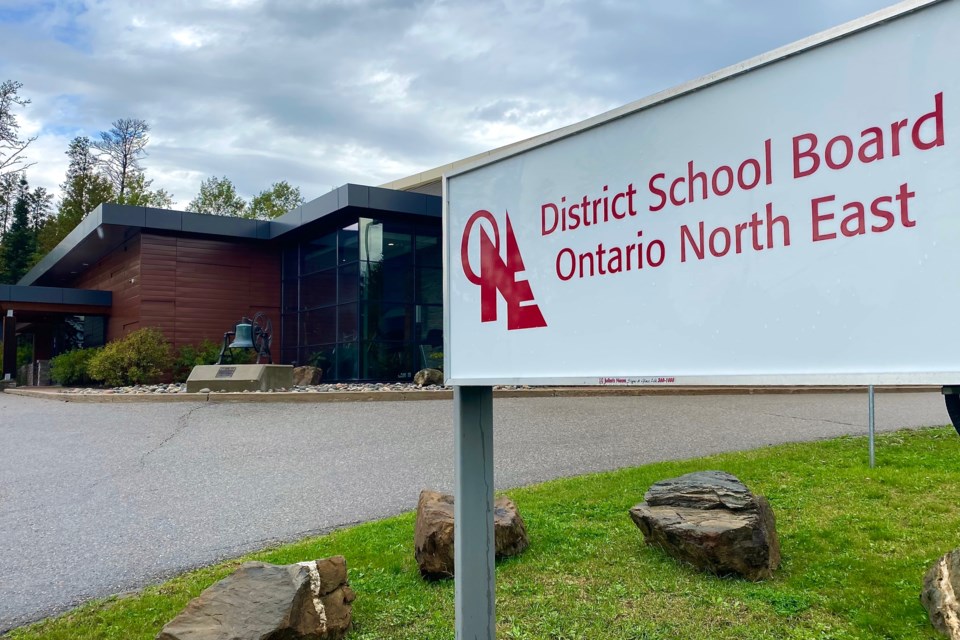There's work to do, says superintendent Chad Mowbray.
This week, District School Board Ontario North East (DSB1)’s trustees received a report on graduation rates and results of provincial testing for the 2021-22 school year.
While graduation rates are up slightly, only 36 per cent of Grade 9 students passed the provincial secondary EQAO math exam.
Students must score at least 70 per cent to pass.
The DSB1 results are lower than the provincial average which was 52 per cent in 2022.
“Eighty-four per cent of our students pass the Grade 9 A stream math, but only 36 per cent met the standard,” said board chair Bob Brush “I have more faith in what happens every day in our classrooms than in this test.”
Mowbray said that the board will be implementing extra steps to increase the pass rate, including one-on-one and small group tutoring, and summer programs to catch students up on the math lessons they need to know.
“We have some great steps in place, some math intervention supports coming to help work with our students who are having some struggles with mathematics, we have math offerings available over the summer,” said Mowbray. “As well, we will have a math lead just to focus and dig in just on mathematics next year.”
DSB1 did much better on the Ontario Secondary School Literacy Test (OSSLT) and had the highest jump in their pass rate that the district has ever seen, going from 62 per cent last year to 79 per cent this year.
RELATED: Students learning through their culture
Indigenous student success has been a focus for the school board and the graduation rate is up two per cent — going from 46 per cent to 48 per cent.
“We have been significantly increasing our graduation rate, and we recognize that we still have a ways to go,” Jill Plaunt, DSB1 Indigenous education lead. “We are confident that through the support and working with family, with students, with community partners, nations and the student success team that we will continue to see an increase in our graduation rates.”
The Aboriginal Alternative Secondary School program also quadrupled its graduation rate, from two graduates in the 2020-21 school year to eight this year.
It gives students who struggled with the traditional school model a chance to get their credits and graduate, even after an absence from school.
“The program looks to provide opportunities for land-based learning, cultural teachings, cultural activities and different ways to demonstrate their learning, and to earn the credits they need to achieve their Ontario secondary school diploma,” said Plaunt.
The program is hosted at the Timmins Native Friendship Centre in partnership with DSB1 and reported earlier this year that they were in the process of hiring a second teacher to help increase their capacity.
To earn an Ontario secondary school diploma, students must successfully complete 30 credits, including 18 compulsory credits in core subjects, and 40 hours of community service.
The graduation rate for those that completed their diploma program in four years is 60 per cent, and for those that did it in five years it was 73 per cent.
Superintendent Steve Pladzyk said that the report shows the improvements the district has made and where they need to go next.
“This highlights our journey as we continue to improve our grad rates, our EQAO results and provide students a variety of pathways to realize their best personal success story,” said Pladzyk.



